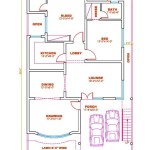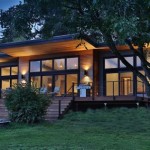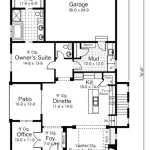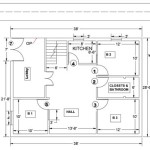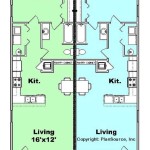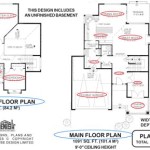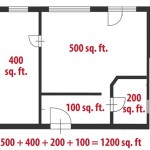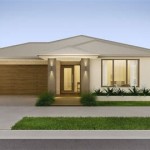House Plans With Screened Porches and Sunrooms: Blending Indoor and Outdoor Living
The appeal of seamlessly integrating the indoors with the outdoors has significantly grown in contemporary home design. House plans incorporating both screened porches and sunrooms offer a multitude of benefits, providing homeowners with versatile spaces to enjoy nature's beauty and tranquility while maintaining comfort and protection from the elements. These architectural elements enhance not only the aesthetic appeal of a home but also its functionality and livability. The design considerations for these spaces are crucial to ensure optimal integration with the existing structure and to maximize their intended purpose.
A screened porch is essentially an outdoor room enclosed with screens, offering protection from insects and providing a shaded area. It allows for natural ventilation and unobstructed views of the surrounding landscape. Sunrooms, also known as solariums or conservatories, are enclosed structures with a significant amount of glazing, often including glass walls and roofs, designed to maximize sunlight exposure. They offer a year-round indoor-outdoor living experience, providing a comfortable and climate-controlled environment regardless of the weather conditions.
The inclusion of both a screened porch and a sunroom in a house plan provides homeowners with options for different seasons and activities. The screened porch is ideal for warm summer evenings, offering a breezy space for dining, relaxing, or entertaining. The sunroom, on the other hand, provides a warm and inviting space during colder months, allowing homeowners to enjoy natural light and the beauty of the outdoors even when the weather prohibits spending time outside. The choice between these spaces often depends on personal preference, the intended use, and the prevailing climate.
Key Considerations for Designing Screened Porches and Sunrooms
Successfully integrating screened porches and sunrooms into house plans necessitates careful consideration of various factors, including location, orientation, materials, and overall design aesthetic. A well-planned and executed design ensures that these spaces are not only visually appealing but also functional, comfortable, and energy-efficient.
Location and Orientation: The placement of both the screened porch and the sunroom is paramount. The orientation of these spaces with respect to the sun’s path significantly impacts their temperature and overall comfort. A screened porch typically benefits from a location that offers shade during the hottest part of the day, often achieved by facing it east or north. This orientation minimizes direct sunlight exposure, keeping the porch cooler and more comfortable. A sunroom, conversely, benefits from a southern or western exposure to maximize sunlight during the winter months. However, adequate shading measures, such as awnings, blinds, or strategically planted trees, may be necessary to prevent overheating during the summer.
Proximity to other areas of the house is also a crucial consideration. Ideally, screened porches and sunrooms should be easily accessible from the main living areas, such as the kitchen or living room, to facilitate seamless transitions between indoor and outdoor spaces. Direct access to a backyard or garden can further enhance the connection with nature. Furthermore, the surrounding landscape should be taken into account. Views of gardens, forests, or water features can significantly enhance the enjoyment of these spaces.
Material Selection: The choice of materials for both the screened porch and the sunroom significantly impacts their durability, aesthetics, and performance. For screened porches, durable and weather-resistant materials are essential. Common materials include pressure-treated lumber, cedar, redwood, composite decking, and aluminum framing. Screening options range from traditional fiberglass mesh to more durable and insect-resistant materials such as aluminum or stainless steel mesh. The flooring material should be slip-resistant and able to withstand moisture and temperature fluctuations. For sunrooms, the choice of glazing material is particularly important. Options include single-pane glass, double-pane glass, low-E glass, and polycarbonate panels. Double-pane and low-E glass offer superior insulation, reducing heat loss in the winter and heat gain in the summer. Polycarbonate panels are lightweight, impact-resistant, and offer good insulation, but they may not provide the same level of clarity as glass. The framing material for a sunroom can be wood, aluminum, or vinyl. Each material has its own advantages and disadvantages in terms of cost, durability, and maintenance.
Design Integration: A well-designed screened porch or sunroom should seamlessly integrate with the existing architecture of the house. The style, materials, and proportions of the new space should complement the existing structure to create a cohesive and harmonious design. Rooflines, window styles, and exterior finishes should be carefully considered to ensure a unified appearance. The size and shape of the screened porch or sunroom should be proportionate to the size of the house and the surrounding landscape. Overly large or poorly proportioned spaces can detract from the overall aesthetic appeal of the property.
Benefits of Incorporating Screened Porches and Sunrooms
Adding a screened porch or sunroom to a house plan offers numerous advantages, enhancing the quality of life for homeowners and increasing the value of the property. These spaces provide opportunities for relaxation, entertainment, and connection with nature, contributing to a more fulfilling and enjoyable living experience.
Increased Living Space: Both screened porches and sunrooms effectively expand the usable living space of a home. Screened porches provide an additional outdoor living area for warm-weather activities, while sunrooms offer a year-round space for relaxation and recreation. These spaces can be used for a variety of purposes, such as dining, lounging, reading, gardening, or even as a home office. The added square footage can significantly improve the functionality and livability of the home.
Enhanced Connection with Nature: One of the primary benefits of incorporating screened porches and sunrooms is the enhanced connection with nature. These spaces allow homeowners to enjoy the beauty of the outdoors without being exposed to the elements or insects. Screened porches offer unobstructed views of the surrounding landscape and allow for natural ventilation, creating a refreshing and relaxing environment. Sunrooms provide a warm and inviting space to enjoy natural light and the beauty of the outdoors, even during inclement weather. The ability to connect with nature has been shown to have numerous psychological and physiological benefits, including reduced stress, improved mood, and increased creativity.
Increased Property Value: Adding a well-designed screened porch or sunroom can significantly increase the value of a property. These spaces are highly desirable features for many homebuyers, adding to the appeal and marketability of the home. The increased living space, enhanced connection with nature, and improved aesthetic appeal all contribute to a higher property value. Furthermore, a screened porch or sunroom can be a relatively cost-effective way to add value to a home compared to other types of renovations or additions.
Design Considerations for Specific Uses
The specific purpose for which a screened porch or sunroom is intended will influence its design and features. Tailoring the design to the intended use ensures that the space is both functional and enjoyable.
Outdoor Dining: If the primary purpose of the screened porch is for outdoor dining, the design should prioritize ample space for a dining table and chairs. The flooring material should be durable and easy to clean, and adequate lighting should be provided for evening meals. Consider incorporating a ceiling fan to improve air circulation and keep insects away. Outdoor speakers can add to the ambiance and enjoyment of meals. The proximity to the kitchen is also important for convenient food preparation and serving.
Relaxation and Lounging: For a screened porch or sunroom intended for relaxation and lounging, comfortable seating is essential. Consider incorporating comfortable sofas, armchairs, and ottomans. Soft lighting, such as lamps or string lights, can create a cozy and inviting atmosphere. The addition of plants can further enhance the relaxing ambiance. For a sunroom used for relaxation, consider adding a water feature or a small indoor garden to create a sense of tranquility.
Home Office: A screened porch or sunroom can also serve as a home office, providing a bright and inspiring workspace. Natural light is beneficial for productivity and well-being. Ensure that there are adequate electrical outlets for computers, printers, and other office equipment. Consider incorporating built-in shelving or storage to keep the space organized. A comfortable desk and chair are essential for a productive work environment. Ensure the space is adequately insulated and climate-controlled for year-round comfort if it's a sunroom being used for this purpose.
Careful planning and design are essential for creating screened porches and sunrooms that seamlessly integrate with the existing architecture of the house and meet the specific needs and preferences of the homeowners. The result is a valuable addition to the home that enhances its beauty, functionality, and livability.

Your Guide To House Plans With Screened In Porches Houseplans Blog Com

Your Guide To House Plans With Screened In Porches Houseplans Blog Com

Your Guide To House Plans With Screened In Porches Houseplans Blog Com

Your Guide To House Plans With Screened In Porches Houseplans Blog Com

House Plans With Screened Porch Or Sunroom Drummond

House Plans With Screened Porch Or Sunroom Drummond

Your Guide To House Plans With Screened In Porches Houseplans Blog Com

Plan 86245hh Views To The Back Country Style House Plans With Porch Screened Designs

House Plans With Sunrooms And Screened Porches

House Plans With Sunrooms Or 4 Season Rooms
Related Posts

